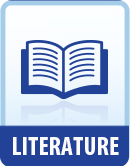|
This section contains 427 words (approx. 2 pages at 400 words per page) |

|
Bright and Morning Star Summary & Study Guide Description
Bright and Morning Star Summary & Study Guide includes comprehensive information and analysis to help you understand the book. This study guide contains the following sections:
This detailed literature summary also contains Bibliography and a Free Quiz on Bright and Morning Star by Richard Wright.
When Richard Wright wrote "Bright and Morning Star," he was involved with the Communist Party. His first published stories (a category to which "Bright and Morning Star" belongs) centered on communist themes, such as organizing the working force and fighting for the rights of oppressed people. These first stories most often appeared in leftist periodicals.
At the time of publication of "Bright and Morning Star," Wright was living in New York and was working as the Harlem editor for the communist newspaper the Daily Worker. "Bright and Morning Star" was first published in 1938 in The Masses, a radical, socialist monthly journal, and was not collected in the original publication of Uncle Tom's Children. Rather, it was in 1940, when Uncle Tom's Children was reprinted and expanded, that "Bright and Morning Star" was included in this collection.
Besides being influenced by the philosophy of the Community Party, Wright often made mention, especially during the beginning of his writing career, of Theodore Dreiser and Sinclair Lewis, writers who discussed topics such as the debilitating effects of the American class system and the struggles of working-class people, and whose writing styles impressed Wright. Wright admired their straightforward language and their goal to reproduce in their stories a reality that was as close to truth as possible, and he adopted the style to reflect on the absurdities of the oppression of black people.
However, it was not Wright's writing style that attracted his eventual wide readership. It was his subject matter, which he presented in shocking and realistic detail. When "Bright and Morning Star" was published in the revised edition of Uncle Tom's Children, Wright was well known because of the commercial success of his novel Native Son. He gained this fame just as the Harlem Renaissance (a name given to an era, vaguely assigned as the 1920s, of a flourishing of African-American arts) was fading. Wright's work, with its more realistic and angrier tone, is said to have signaled a new period in African-American literature. The new writing was more political than the body of works that had been produced during the Harlem Renaissance. Wright's books prefigured the beginning of the Black Arts Movement (1950s to 1970s), whose authors included Ralph Ellison (The Invisible Man, 1952) and James Baldwin (Go Tell It on the Mountain, 1953). The overall aim of this group's literature was to end racism, and the movement has been hailed as one of the more important forces behind the eventual Civil Rights movement. Many authors in this movement were said to have been greatly influenced by Wright's work.
Read more from the Study Guide
|
This section contains 427 words (approx. 2 pages at 400 words per page) |

|



